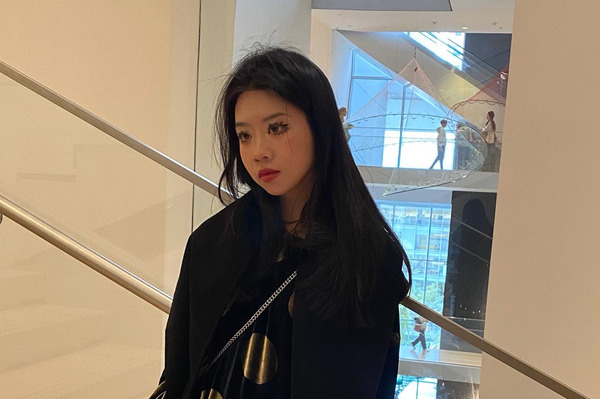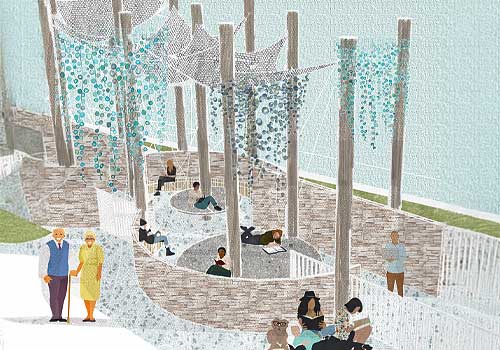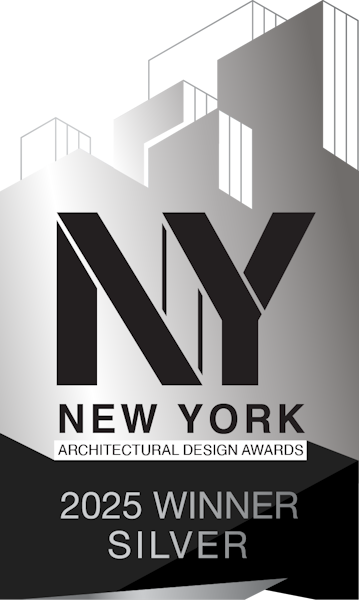
Interview
Zheng He
Zheng He, United States
Zheng He is an architectural designer driven by a deep interest in the emotional and cultural dimensions of space. With a foundation in landscape and preservation design, her work focuses on revitalizing neglected urban corners by bridging historical context with contemporary architectural language, aiming to foster community connection and humanistic care.
1 | Congratulations on your achievement! What inspired you to submit this project for the NY Architectural Design Awards?
Thank you! I chose to submit this project to the New York Architectural Design Awards because I believe that historic preservation should be about preserving the past and becoming part of the city's future. This project demonstrates the respect of the design for the historical lineage and reflects my deep concern for “community revitalization” and “humanistic care”. Through this international platform, I hope to arouse more people's attention and thoughts to these “neglected precious corners” in the city, and to demonstrate the unique charm of combining oriental culture with contemporary expression.
2 | What is the defining concept or vision behind your award-winning project?
The core concept behind my award-winning project is to renew in continuity and to pass on in life. Through my design, I hope to not only preserve the cultural fabric and community memory of the historical neighborhoods in Gongshu District but also give them new vitality and function. This vision stems from my understanding of urban renewal - not a simple replacement but a symbiosis of tradition and modernity, so that people can continue to live, communicate, and grow in familiar streets and alleys, thus realizing the rejuvenation of a community with a true sense of warmth and belonging.
3 | Could you briefly share your journey into architecture and what inspired you to pursue this field?
Of course. My journey in architecture and design began with a curiosity about the relationship between people and their environment in space. I initially studied landscape and preservation design, but after delving into historical buildings and urban spaces, I was fascinated by the cultural memories, traces of life, and humanism contained therein. This obsession with the “dialogue between time and space” inspired me to pursue a career in architecture, hoping to connect the past with the present and revitalize neglected spaces through design. I always believe that good design is not only about the beauty of the form but also about whether it can respond to human emotions and social changes.
4 | How would you describe the mission or goals of your company or studio?
My studio is dedicated to building bridges between history and contemporary, realizing emotional connection and cultural continuity of spaces through design. Our mission is to revitalize neglected corners of the city with a humanistic focus, making spaces not only functional but also full of memory and temperature. We pay special attention to the regeneration of public spaces in old neighborhoods, historic districts, and natural environments, creating sustainable, inclusive, and vital places through the integration of ecological design, local culture, and community participation. Each project is a deep conversation with the land, history, and people.
5 | Were there any unexpected challenges during the design or construction phases? How did they shape the final result?
Yes, during the project, our biggest challenge came from how to meet the functional needs of modern life while preserving the original texture and spatial memory. For example, the high density of buildings in the old neighborhood and the limited open space available made the planning of public space a great test. Therefore, we adopted the strategy of “micro-renewal” - through the integration of street corners, abandoned yards, and other scattered spaces, implanting flexible and complex functional design, such as small gathering areas, community gardens, and so on. Although this process requires a lot of research and communication with residents, it also inspires more local inspiration, making the result closer to the real needs of residents and more warm and vital. This challenge became an important opportunity for us to deepen our design and humanistic thinking.
6 | How does your design process usually unfold-from ideation to completion?
My design process always centers on “people” and “spirit of place”, emphasizing emotional resonance and cultural continuity. In preservation and revitalization projects, I start with in-depth field surveys and community interviews to understand residents' lifestyles, spatial habits, and emotional demands and, at the same time, to sort out the site's historical lineage and cultural values. Then we enter the conceptualization stage, where I build up the design logic in a storytelling way and outline the vision through images, words, and scene simulation to present a spatial framework that respects the past and responds to the present. This is followed by detailed design and material selection. I prefer to use natural, rustic, and memorable materials to strengthen the intimacy and continuity of the space. Throughout the process, I also place great importance on continuous interaction and feedback with the community to ensure that the design truly serves people and everyday life once it is in place.
7 | If you had to describe the journey of this project in three words, what would they be?
If I had to describe the journey of this project in three words, I would choose: Listening, Connecting, Renewing. “Listening" represents our deep understanding of the lives and emotions of the residents; "Connecting" is to reconnect the historical with the contemporary, the people with the people; and "Rebirth" symbolizes the new life and vitality of this community based on respect for tradition. “Renewing” symbolizes the community's renewed vitality and energy based on respect for tradition.
8 | What feedback have you received about your work that has been particularly meaningful or surprising?
An editor of an architecture magazine said to me after seeing my project, “Your design is like a tender love letter to the city, with both respect and anticipation.” Although the project has not yet really taken off, he said that the conservation concepts and community temperature it presents have already sparked a lively discussion among readers. This makes me deeply feel that the power of design lies not only in the space being built but also in the fact that it inspires people to re-imagine cultural heritage and the aesthetics of life.
9 | What does receiving this recognition mean for you, your team, or your studio?
Receiving this recognition is not only an affirmation of my design philosophy and professional competence but also an opportunity to engage in dialogue with the world. It proves that our efforts to find a balance between historical preservation and contemporary expression have been recognized by the professional field. It not only enhances my influence in the industry but also attracts more like-minded partners, giving us the opportunity to participate in more projects with social significance and cultural value.
10 | How do you see this award influencing your future projects or career?
This award has injected more confidence and possibilities into my professional journey. It has not only raised my visibility in the professional field but also allowed me to network with more international platforms and professionals, broadening the horizon of project collaboration. For future projects, it is like a passport that makes more people willing to listen to my ideas on historic preservation and community revitalization, and more willing to believe that a design that considers the humanistic spirit and contemporary needs can truly change cities and lives.
11 | What's a project or idea you've been dreaming of bringing to life, and why does it inspire you?
The project I have always dreamed of realizing is to create a public space that combines memory narrative, ecological restoration, and spiritual healing in a forgotten historical site. I envision it as a silent poem, growing green on top of the ruins, speaking of the past in silence - a place where people can walk, meditate, and reconnect with themselves and the land. This vision stems from my continuous thinking about “time”. In today's rapidly urbanizing world, we often lose our connection to the land, history, and even our inner rhythms. I believe that the power of design lies in its ability to heal the ruptures, activate the silence, and create a journey for people to be “seen”. Such a space is not only a physical place but also an emotional home, a response to memory, existence, and hope. This is the design value I always pursue and the form of work I am most eager to realize.
12 | Where do you see the architectural field heading in the next decade, and how do you envision contributing to its evolution?
I believe that in the next decade, the development of architecture will be more focused on three major directions: cultural sustainability, ecological restoration, and emotional links. Against the backdrop of rapid urbanization and the global climate crisis, architecture is no longer just an accumulation of forms but a container that carries memories, reconciles nature, and responds to emotions. Future design will emphasize “soft values” - how to tell stories through space, how to perpetuate the spirit of place, and how to give people stability and resonance in the environment. I hope to contribute to the field of architecture as an “interlocutor between history and the future”. Whether it is through conservation and regeneration design, community building, or integrating humanistic perspectives with sustainable practices, I would like to be the designer who connects the pieces into a whole and gives a voice to the silent places. At the same time, I also hope to expand the boundaries of design through crossover (e.g., combining landscape, architecture, and micro-expressions such as jewelry) and explore how “space” can respond to the human heart and the times in a wider range of scales and media.
13 | How do you see your designs contributing to the future of sustainable architecture?
I believe that truly sustainable architecture is not only about materials and technology but also about the harmonious relationship between people and the environment, history, and the future. My design emphasizes “living conservation”, preserving the historical and cultural texture while introducing ecological restoration and community co-construction mechanisms so that the building can become a self-renewing, living being. Through this practice, I hope to provide a new paradigm for the future of sustainable architecture that integrates cultural heritage and ecological wisdom.
14 | If you could design anything, with no limits on budget or imagination, what would it be?
If I were not limited by budget or imagination, I would design a “symbiotic garden of memory” - an immersive space that combines landscape, architecture, and artistic jewelry. It is not only a contemporary expression of cultural heritage but also a vehicle for the resonance of emotions and nature. Every green leaf, every architectural detail, and even a piece of jewelry worn here tells the story of a person and the history of a place. I hope this space can evoke people's cherishing of the past, their perception of the present, and their imagination of the future so that design can truly become a bridge connecting people and land, time, and emotion.

